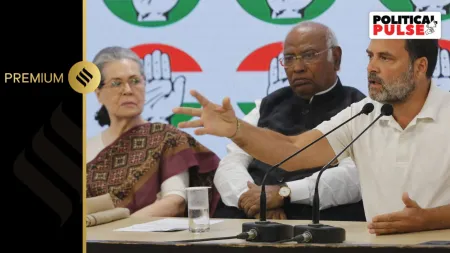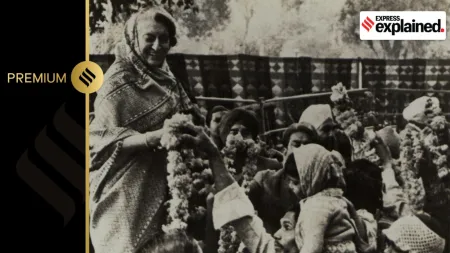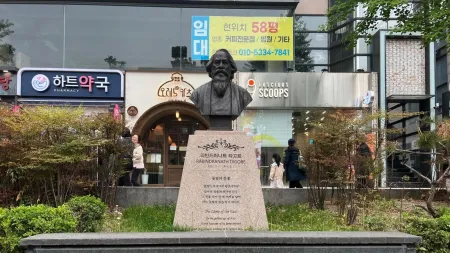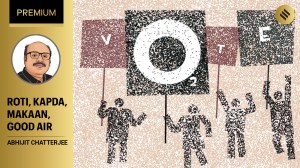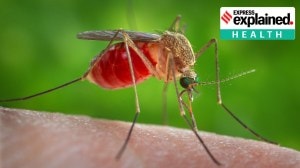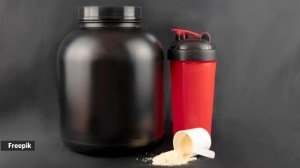- India
- International
New system for fertiliser subsidy payments: Govt presses pause button
Subsidy release linked to actual sales through PoS machines to farmers not to be implemented this kharif; roll-out possible in the coming rabi season
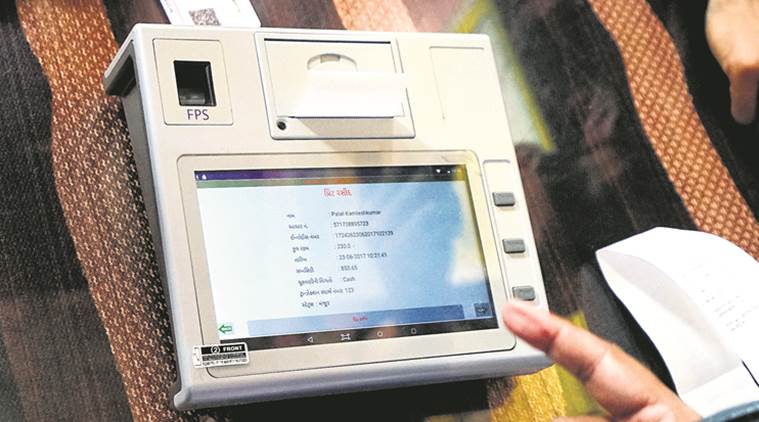 A new point-of-sale machine at a fertiliser retail point in Gujarat. (Source: Bhupendra Rana)
A new point-of-sale machine at a fertiliser retail point in Gujarat. (Source: Bhupendra Rana)
Agrarian unrest, coupled with uncertainties relating to the new goods and service tax (GST) regime, has seemingly forced the Narendra Modi government to defer its plans for disbursing fertiliser subsidy to companies only after actual sales to farmers registered on point-of-sale (PoS) machines. The move to a system of subsidy disbursal post-sale — as opposed to companies being paid now on receipt of their material at the railhead point or approved godown of a district — was supposed to have taken place with effect from the current kharif season, beginning June.
That kick-off date was, however, put off initially to July 1. And now, in a fresh communication, dated June 30, the Department of Fertilisers (DOF) has informed companies and state governments that “it is not possible to sell fertilisers through PoS devices at present” because of “a lack of availability” of these machines. In view of this, “it has been decided to extend the timeline for deployment of PoS devices across the country to 31st July, 2017”.
When contacted, a DOF official confirmed that the proposed linking of subsidy release to sale transactions — these, along with farmers’ names and Aadhaar-based biometric authentication details, are to be captured on PoS machines installed at the retailers’ end and connected to a central server — will not be rolled out in this kharif season. “There are almost two lakh registered fertiliser sale outlets in the country. While the procurement of the PoS devices is completed, they have been deployed only in about half of the outlets. We hope to finish it by this month-end, which should enable implementation from the next rabi season starting October. In any case, there were other issues, including GST, coming in the way of implementation this kharif,” he admitted.
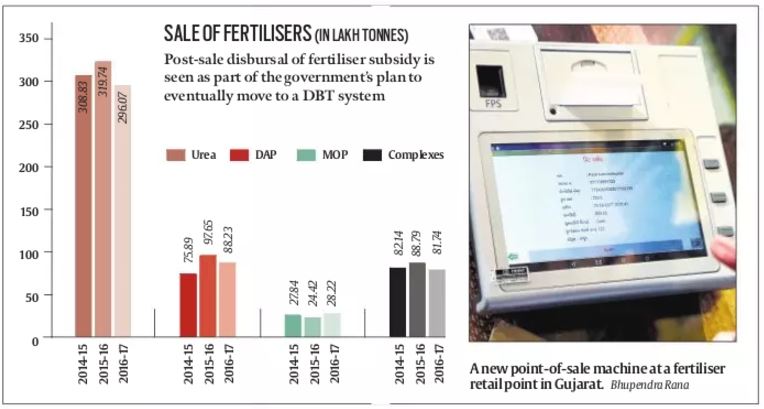
Post-sale disbursal of fertiliser subsidy is seen as part of the Modi government’s plan to eventually move to a direct benefit transfer (DBT) system similar to that already in place for LPG cylinders. Part one of this plan involved making neem-coating mandatory for the entire urea sold in the country. This has helped substantially check diversion of a highly-subsidised fertiliser towards non-agricultural use, while also allowing for a more gradual release of nitrogen. The resultant improved nutrient use efficiency has led to lower urea sales, while inducing farmers to apply less of other fertilisers, too, in the last fiscal (see chart).
The linking of subsidy payment to data generated at the retail sale point would make for part two of the move towards DBT. With transactions being captured at the final buyer’s level, weeding out non-genuine farmers becomes possible. A farmer growing wheat or paddy may use three bags of urea, one bag of di-ammonium phosphate (DAP) and half-a-bag of muriate of potash (MOP) per acre. But someone buying 200 bags of urea is more likely to be a plywood or particle board manufacturer rather than a farmer. Once it is known who is buying and how, the subsidy can be restricted to genuine farmers and, at a later stage, to a maximum number of bags automatically covering holdings below a certain size.

Read | Empowering through Nimboli: The story of a mini-rural entrepreneur Laxmiben
In some states like Gujarat, the PoS devices have already been deployed at all retail outlets, with the dealers even being trained how to use these. The machines installed have features that include local language interface, fingerprint scanning device, QR code reader (eliminating the need for typing the unique 12-digit Aadhaar number of the buyer), thermal printer, Android-based tablet and multiple ports (landline phone in addition to SIM card) connecting to the central server. Besides, they have built-in pin pad facility that enables cash-less payments. While installation of the PoS machines is complete or still in progress in other states, there are concerns, however, over their not working due to network connectivity or signal strength problems. Pankaj Patel, a dealer at Gujarat’s Kapadwanj agricultural produce market committee yard, sells about 1,500 tonnes of urea, 200-300 tonnes of DAP, 150 tonnes of 20:20:0:13 (a complex fertiliser containing various proportions of nitrogen, phosphorus, potash and sulphur) and 100 tonnes of 20:20:0:0 during a kharif season. He has a total buyer base of 50,000 farmers from 200 villages in and around Kapadwanj taluka. And his sales take place between May 15 and August 15, much of it concentrated over July and early August.
“Right now, I have three people — one to collect cash, one to make the bill and one to deliver the bag — who can handle four farmers in one minute. With the new system, it can only be one farmer in one minute. And everything depends on connectivity. If that is poor, handling the long queues during the peak purchase period can be a problem,” he pointed out. That problem can be a handful, more so in the current context of farmer agitations over low price realisations and loan waivers. The Modi government may well have decided that this isn’t politically the most opportune time for fast-tracking the DBT programme for payment of fertiliser subsidy. That can probably wait till the next rabi season.
May 09: Latest News
- 01
- 02
- 03
- 04
- 05


